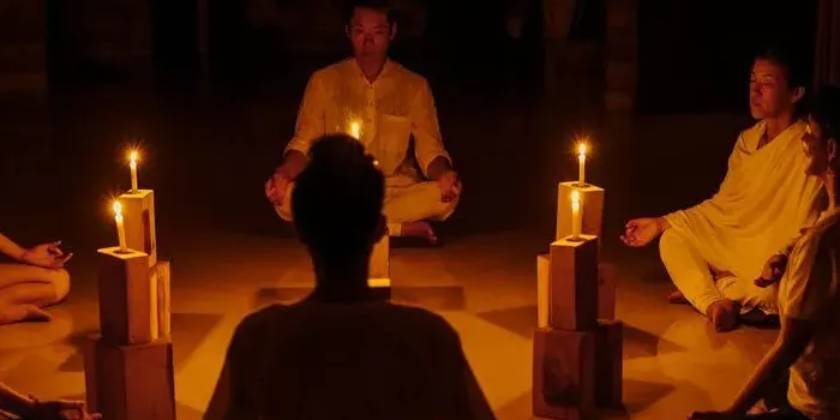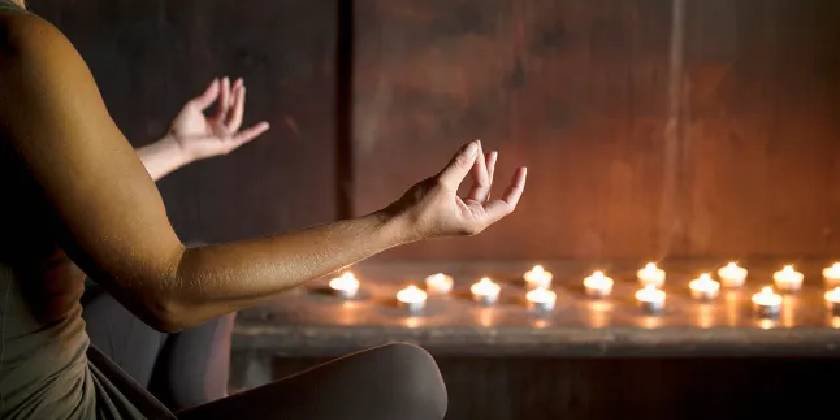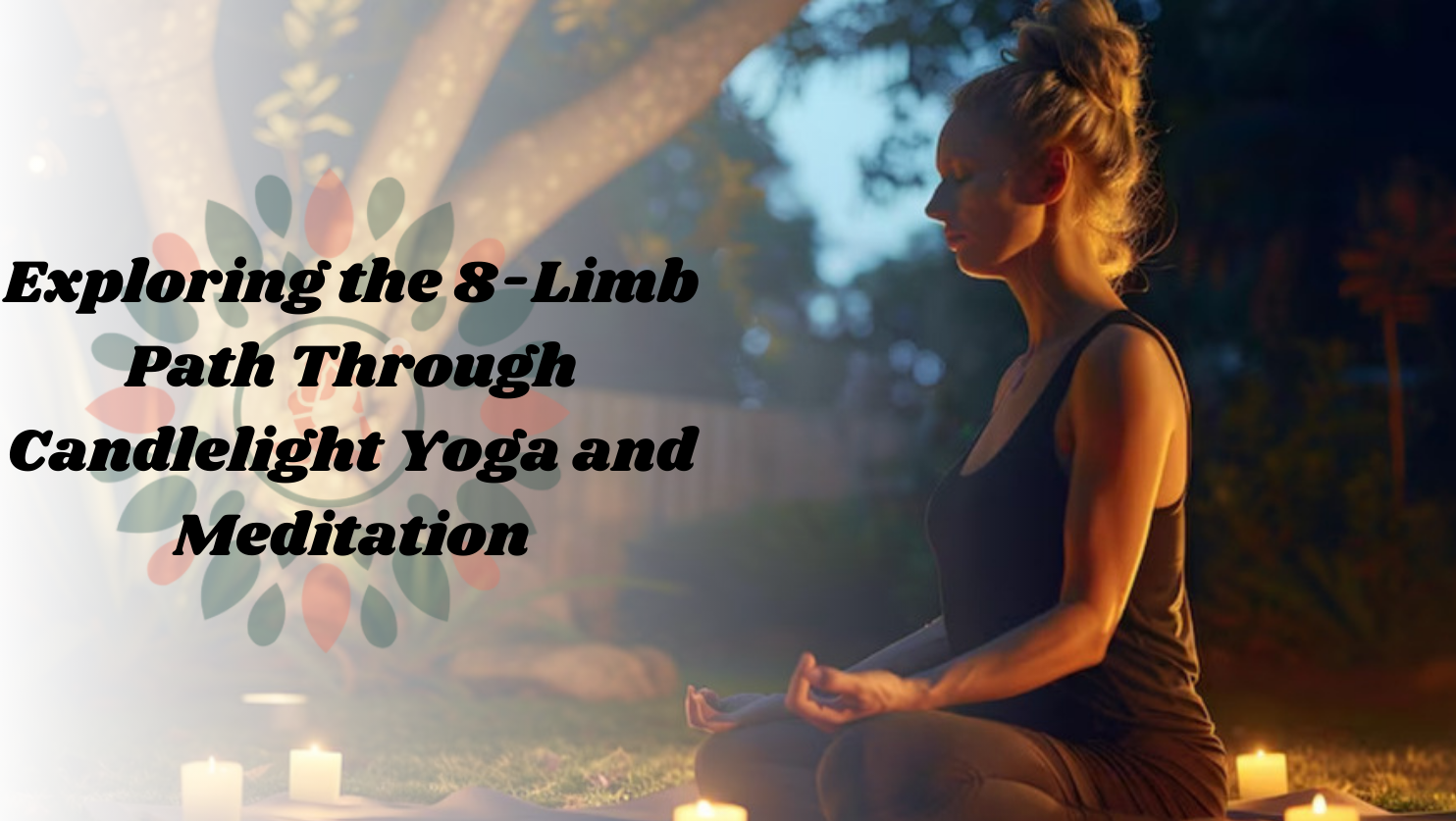Love yoga? Love candlelight meditation? Don’t know what 8 Limb Path is? Perfect! This two-hour session will focus on the 8 limb paths, which are the components that make yoga, Candlelight yoga! will guide you deep into practice and exploring the depths of your body and Candlelight yoga working together in unison.
During this warm (heated) practice you will be surrounded by candlelight for a full Candlelight practice creates an ambiance of clarity and soothing energy that can help bring you into a gentle mindset or stimulate your spirit into a highly focused practice. Gauge the energy of the room and your body and allow it to move you into a nourishing practice for the mind, body, and spirit. The flow will prepare your mind and body for an engrossed guided meditation that will bring your mind into peace as you achieve a deep meditate state.
8 limbs of yoga, Candlelight in the Yoga and Meditation
You are already probably familiar with 2 of the limbs, asana and pranayama. These are the Sanskrit terms for poses and breathing techniques that generally becomes the main focus during every yoga practice.
The other 6 limbs coincide with what you already know and practice. Around 200 A.D. Pantanjali recorded the philosophy of Candlelight yoga and the 8 limbs to controlling the restlessness of the mind in The Candlelight Yoga Sutras. Being more conscious of the parts that make up this ancient practice allows us to center our practice and become more in tune with our true self. It is evident that each limb holds equal importance and resonates with being part of the whole. Below is a simplified breakdown of the 8 paths.

1.Yama- Universal Morality
Universal morality is our observance toward others and how we treat people. Yama is the ethical and moral code on the path towards achieving peace. Yama is further broken down into five wise characteristics.
5 Wise Characteristics of Yama:
Ahimsa– Nonviolence, harmlessness; the practice of not causing pain to any living thing in our thoughts or actions
Satya-Truthfulness; the practice of always communicating the truth to others and to the self
Asteya– Nonstealing; do not take what rightly belongs to others and do not steal by over consumption
Brahmacharya– Celibacy; maintain respect and self-control for your body and spirit. Do not waste energy and time on acts that are not of love
Aparigraha– Modesty; have and take no more than you need in all aspects of life
2.Niyama- Personal Observances
Niyama is like Yama as it relates to an ethical code, but Niyama is a code we adopt towards ourselves. It is an attitude that is linked to how we treat our mind and body.
5 Internal Ethics of Niyama:
Saucha-Purity, clarity; the practice of physically and internally keeping ourselves clean of toxins, negative thoughts, patterns, and behaviors to maintain a healthy mind and body
Santosha– Contentment; accepting who you are and what you have. Practicing that everything happens for a reason and using pain and struggles as a tool for growth
Tapas– Austerity; being completely aware and control of the energy of our mind and actions.
Svadhyaya– Self-study; any practice that results in self-reflection of consciousness. Practicing mindfulness and accepting ourselves for who we are with compassion.
Ishvara pranidhana– Surrender to the divine; creating time every day to practice gratitude towards the divine and bring awareness to the greater force driving and guiding our existence.
3.Asanas- Body Postures
Practicing asana has benefits for all parts of our being. At Om Setu Yogashala, the practice of surrendering to poses helps us build strength both mentally and physically while also challenging our stillness and balance. It is through these postures that we become attuned to our physical body’s strengths, limitations, and needs. As we deepen our awareness, our minds grow still, allowing us to become more acclimated to who we truly are and the power our bodies hold.
4.Pranayama- Breath Control
Pranayama is the practice of controlling the breath and energy within our body. Through conscious awareness of the breath we are able to direct the energy in the body in the practice of self-discipline and vitalizing the chakra system of body. It is through breath control that we are able to bring the mind and body into a calm state of relaxation
5.Pratyahara- Control of the Senses
Pratyahara is withdrawing the senses resulting in the loss of desire for external attachment. Through meditation we are able to bring our senses focus into the body and the desire for attachment and objects is diminished. Desire is linked directly to suffering and leads to imbalances in the mind and body. In this practice of Candlelight yoga we find the inner peace that is constantly there.
6.Dharana- Concentration
Dharana is intense concentration of one object or experience. The focus is controlled and attention is maintained in one direction. The mind does not wander aimlessly, but concentration is held upon one object without judgment. The mind is able to hold its attention with all senses of the body engaged.
7.Dhyana- Meditation
Dhyana is the practice of meditating on the Divine. Unlike Dharana, Dhyana focuses on seeking truth and answers through deep contemplation. During meditation, we bring our true nature to light and listen to the wisdom of our subconscious. We connect with the Divine and feel a sense of unison with the world around us, while experiencing the falsehood of reality. At a Yoga Retreat in Rishikesh, practitioners often immerse themselves in Dhyana to awaken spiritual insight, enhance inner peace, and foster a profound connection with their higher self.
8.Samadhi- Union with the Divine
Samadhi is the ultimate goal of Candlelight yoga with a merging of the body and spirit with the Divine. During Samadhi, the body and senses are in a state of rest but the mind is able to comprehend and explore deeper states of consciousness. This is a state of truth and pure joy where the ego has left the body and one is able to live from their pure identity. This is a difficult task, but the other limb paths are designed to prepare one for this merging of the mind, body, and spirit.

Final Words
The 8 limb paths of yoga are a tool to helping aid one in their journey to self-actualization and enlightenment. Each path is related and does not exist without the other. The paths together make up the purpose and practice of Candlelight yoga. Integrating these practices into our lives helps create balance and positive health benefits mentally, physically, emotionally, and spiritually.
Allow us to help you find your path as you embark on this journey during a candlelight flow to deepen your practice and overall well-being.




